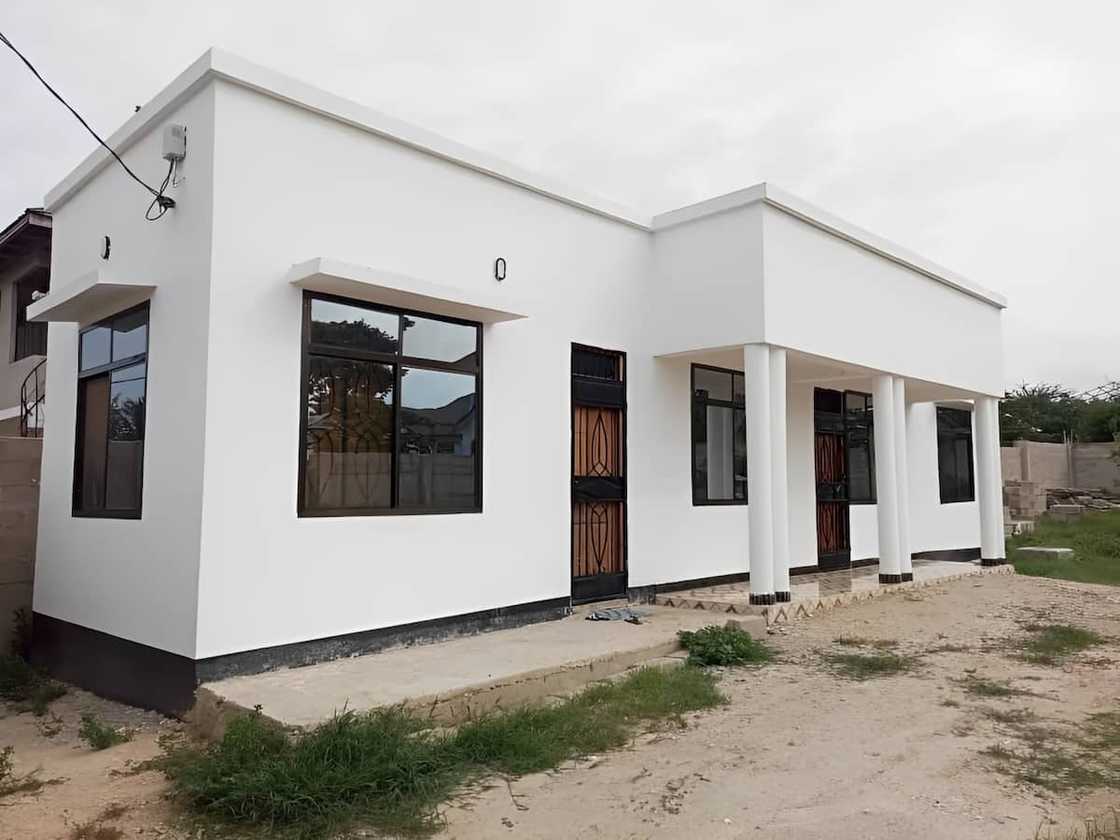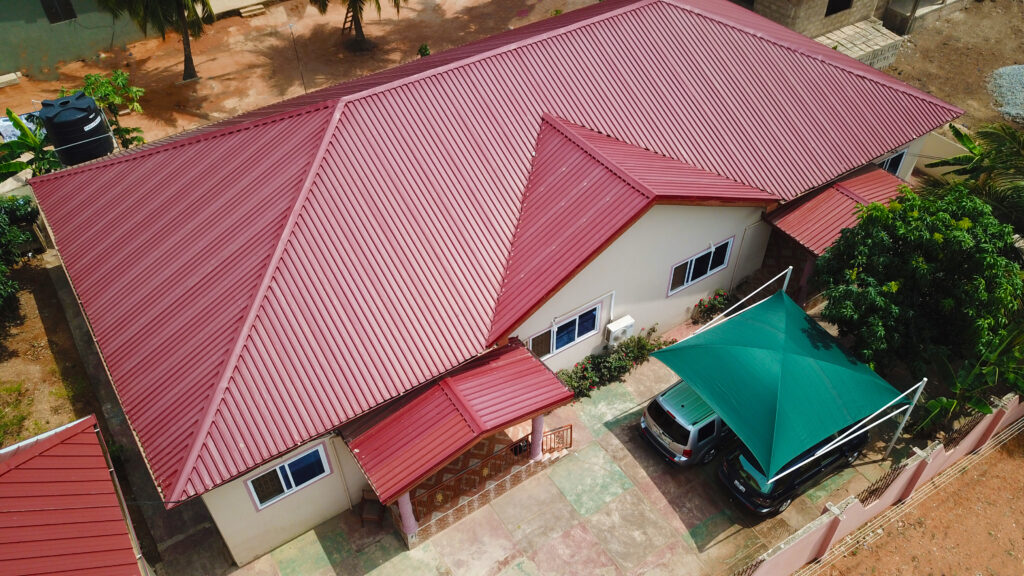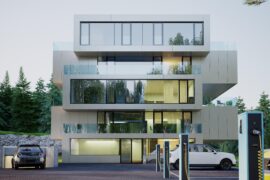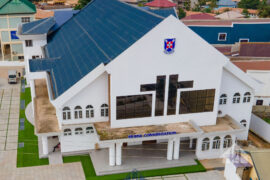Picture this: you’re standing outside, gazing up at the sky, and you see a hidden gem, a roof that seamlessly blends into the surrounding architecture. Intrigued, you wonder what makes this hidden roof so special. Well, let me tell you, there are five compelling reasons why opting for a hidden roof is the best choice for your project. From enhanced aesthetics to increased energy efficiency, these advantages will leave you wanting more. So, why settle for an ordinary roof when you can have something extraordinary?
Enhanced Aesthetics
When considering the enhanced aesthetics of your project, opting for a hidden roof is the best choice you can make. Not only does it provide a sleek and modern look, but it also offers practical benefits that will enhance the overall appeal of your space. One of their key advantages is improved insulation. Their design allows for better insulation, reducing heat loss in the winter and heat gain in the summer. This not only creates a more comfortable environment but also helps to lower energy costs.
In addition to improved insulation, a hidden roof also allows for increased natural lighting. By incorporating skylights or large windows into the design, you can maximize the amount of natural light that enters your space. Natural light not only brightens up the area but also creates a sense of openness and connection to the outdoors. This can greatly enhance the aesthetic appeal of your project, making it feel more inviting and enjoyable. Furthermore, increased natural lighting can also have positive effects on mood and productivity.
Increased Energy Efficiency
To achieve increased energy efficiency, opting for a hidden roof in your project is the smartest choice you can make. Here are four reasons why:
1. Energy Savings: Hidden roofs are designed to provide superior insulation, preventing heat loss in the winter and heat gain in the summer. This results in reduced energy consumption for heating and cooling, leading to significant cost savings on your energy bills.
2. Environmental Impact: By choosing a hidden roof, you are making a positive contribution to the environment. The improved insulation properties reduce the need for artificial heating and cooling, resulting in lower greenhouse gas emissions. This helps mitigate climate change and reduces your project’s carbon footprint.
3. Thermal Performance: Hidden roofs are engineered to optimize thermal performance. The combination of insulation materials, ventilation systems, and reflective surfaces ensures that your project maintains a comfortable temperature year-round. This eliminates the need for excessive heating or cooling, further reducing energy consumption.
4. Durability: Hidden roofs are constructed using high-quality materials that are designed to withstand the elements. This durability ensures that the insulation properties of the roof remain intact over time, maximizing energy savings and reducing maintenance costs.
Superior Waterproofing
For superior waterproofing in your project, consider the hidden roof solution. They are designed to provide long-term benefits by effectively protecting your structure from water damage. The key to their superior waterproofing lies in the innovative design and materials used.
Hidden roofs are built with a combination of advanced waterproofing membranes and a concealed drainage system. These membranes are specifically engineered to resist water penetration and effectively channel any moisture away from the structure. This ensures that your project remains dry and free from leaks, even in the harshest weather conditions.
The cost-effectiveness of hidden roofs is another significant advantage. By preventing water damage, they reduce the need for costly repairs and maintenance in the long run. The advanced waterproofing materials used also have a longer lifespan compared to traditional roofing solutions, further enhancing their cost-effectiveness.
Additionally, they offer enhanced protection against other elements such as UV rays and extreme temperatures. This further extends the lifespan of your structure and minimizes the need for repairs or replacements.
Reduced Maintenance
With the hidden roof solution’s superior waterproofing capabilities and long-lasting materials, you can expect significantly reduced maintenance requirements for your project. This not only provides you with cost savings in the long run but also offers several long-term benefits that make them the ideal choice for your project. Here are four reasons why they can help you achieve reduced maintenance and enjoy long-term benefits:
1. Durability: Hidden roofs are built to last. Their high-quality materials and construction ensure that they can withstand harsh weather conditions, minimizing the need for repairs or replacements.
2. Easy Maintenance: Hidden roofs require minimal maintenance due to their design and material choices. With proper installation and regular inspections, you can keep your them in excellent condition with minimal effort.
3. Reduced Risk of Leaks: The superior waterproofing capabilities of hidden roofs significantly reduce the risk of leaks and water damage. This not only protects your building’s structural integrity but also saves you from costly repairs and potential downtime.
4. Longevity: Hidden roofs have a longer lifespan compared to traditional roofing systems. This means that you can enjoy the benefits of a well-maintained roof for a more extended period, saving you money on frequent replacements or repairs.
Investing in a hidden roof for your project not only ensures reduced maintenance but also provides you with long-term cost savings and peace of mind.
5 Reasons Why Hidden Roof Is Not The Best For Your Project
Hidden roofs are engineered with advanced construction techniques and durable materials to ensure exceptional strength and longevity. When it comes to durability, they are a wise long-term investment for any project. These roofs are built to withstand the test of time, providing structural integrity and peace of mind.
One key factor that contributes to the enhanced durability of hidden roofs is the use of high-quality materials. These roofs are typically constructed using materials such as concrete, steel, or reinforced concrete. These materials are known for their strength and resistance to various environmental factors, including harsh weather conditions and natural disasters. With this type of roof design, you can be confident that your project is protected against potential damage, ensuring its long-term viability.
Another aspect that enhances the durability of hidden roofs is the advanced construction techniques employed during the installation process. These roofs are meticulously designed and installed by experienced professionals who adhere to strict quality standards. This attention to detail ensures that the roof is structurally sound, capable of withstanding heavy loads and external pressures. Additionally, they are designed to minimize the risk of leaks and water damage, further enhancing their durability.
Investing in a hidden roof is a smart choice for any project that requires long-term durability. With their exceptional strength and structural integrity, they offer a reliable solution that will stand the test of time. Whether it’s a commercial building, a residential property, or an industrial facility, opting for a hidden roof ensures that your investment will be protected for years to come.
Frequently Asked Questions
How Much Does a Hidden Roof System Cost Compared to Traditional Roofing Options?
When comparing the cost of a hidden roof system to traditional roofing options, it’s important to consider the benefits it provides. Their cost may be slightly higher initially due to the specialized materials and installation process involved. However, their long-term savings and durability make it a worthwhile investment. Additionally, the installation process is efficient and can be completed with the help of experienced professionals.
Can a Hidden Roof System Be Installed on Any Type of Building or Structure?
A hidden roof system can be installed on various types of buildings or structures, but there are factors to consider before making a decision. Some pros of this type of roof design include their sleek and modern appearance, as well as their ability to conceal mechanical equipment. However, there are cons to consider, such as the potential for higher installation costs and maintenance requirements. It is essential to assess the specific needs and requirements of your project before choosing a hidden roof system.
Are There Any Specific Design Limitations or Considerations When Opting for a Hidden Roof System?
When considering a hidden roof system for your project, there are a few design considerations to keep in mind. Firstly, the structure of the building needs to be able to support the weight, as it can be quite substantial. Additionally, there may be limitations on the type of roofing materials that can be used. While there are benefits to this type of roof design, such as improved aesthetics and increased usable space, it’s important to also consider the potential drawbacks, such as increased construction and maintenance costs.
What Is the Expected Lifespan of a Hidden Roof System Compared to Traditional Roofing Materials?
The expected lifespan of a hidden roof system compared to traditional roofing materials depends on various factors, including the quality of materials used, proper installation, and regular maintenance. However, they generally have a longer lifespan due to their superior durability and resistance to weathering. This is one of the many benefits of hidden roof systems that make them a popular choice for projects requiring long-term protection and reliability.
Are There Any Specific Building Codes or Regulations That Need to Be Considered When Installing a Hidden Roof System?
When it comes to installing a hidden roof system, it’s crucial to consider building code requirements. Different regions may have specific regulations that need to be followed to ensure the system is installed correctly and meets safety standards. Their installation process involves careful planning and adherence to these building codes. It’s important to work with experienced professionals who are knowledgeable about these requirements to ensure a successful and code-compliant installation.
Conclusion
In conclusion, opting for a hidden roof for your project provides numerous benefits. Its sleek design enhances the overall aesthetics, while the increased energy efficiency helps save on utility bills. The superior waterproofing ensures a dry and secure environment, reducing the risk of water damage. With reduced maintenance requirements, you can save both time and money in the long run. Lastly, the enhanced durability of a hidden roof guarantees a long-lasting and reliable solution for your project.
Discover more from Ghana Scoop
Subscribe to get the latest posts sent to your email.





